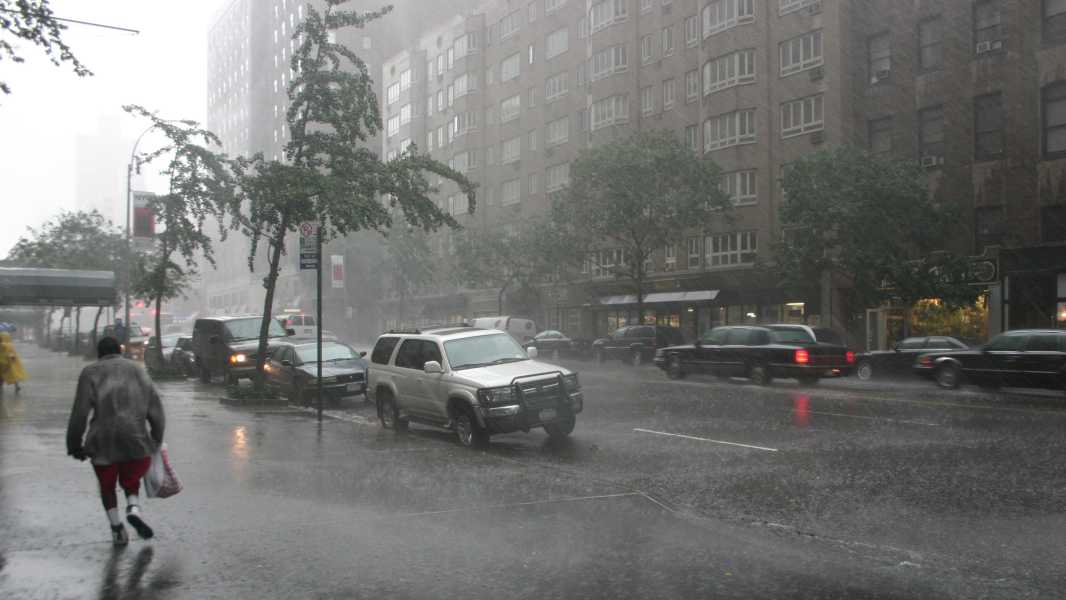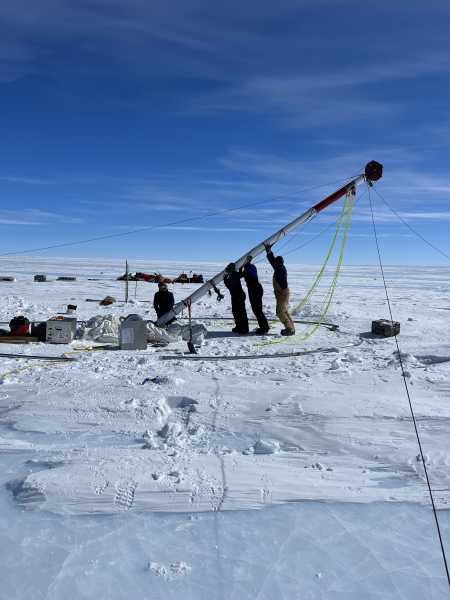
Parts of the U.S. are seeing heavy rain and storms this week as a result of an ongoing omega block. (Image credit: HaraldEWeiss/Getty Images)
Over the past week, an unstable atmospheric system known as an “omega block” has brought heavy rain and thunderstorms to parts of the United States, with flood warnings issued for the southern coasts of Texas, Louisiana and Mississippi on Wednesday (May 7).
Unusually wet and windy weather hit New England on Saturday (May 3), The Washington Post reported, while storms swept across the Rocky Mountains and southern Great Plains from Monday (May 5) through Wednesday. While many eastern, southern and western states faced severe weather due to the omega block, conditions in the north-central U.S. remained mild and clear due to the block's location.
But what is an omega block? And how might it affect weather conditions in the coming days?
An omega block is an atmospheric phenomenon in which a high-pressure air mass is trapped between two low-pressure air masses for an extended period of time. This configuration creates a sandwich effect, causing weather fronts that typically move from west to east to pass around the high-pressure area, forming an inverted U-shape resembling the Greek letter omega. Because the weather fronts bring moisture, the area beneath the two low-pressure areas receives heavy rainfall, while the land beneath the high-pressure area remains dry.
“In meteorology, blocks are types of pressure patterns that disrupt the usual eastward movement of our weather,” the Met Office explained in a YouTube video. “Blocks can remain in one place for several days, causing areas underneath them to have uniform weather for an extended period.”
There is currently a high-pressure air mass over the north-central United States, bringing stable weather conditions and relatively warm temperatures to the region. Meanwhile, the East, West and parts of the South are under the influence of two low-pressure air masses, meaning they will experience rain, thunderstorms and cooler temperatures this week. The omega blocks are moving very slowly, so these contrasting conditions could persist into the weekend and possibly beyond, meteorologists say.
An “Omega Block” is expected to develop this weekend, which is a weather pattern consisting of two low pressure systems and a high pressure system in the middle. For us, that means below-average temperatures, clouds, and rainy conditions throughout the weekend #tnwx @foxnashville pic.twitter.com/MLqJjIHFkxMay 3, 2025
The role of the jet stream
Omega blocks occur when the jet stream — a fast-moving current of air that typically moves west to east at altitudes of 5 to 7 miles (8 to 11 kilometers) above sea level — begins to meander like a river. Strong winds in the jet stream can twist and turn, slowing the current and causing areas of low-pressure air to migrate unpredictably.
When these migrations occur, the jet stream can direct areas of low-pressure air around an area of high pressure, causing an omega block. In general, low-pressure air leads to unstable, cool weather conditions, while high-pressure air creates more stable, warm conditions.
According to a UK Met Office video, a weak jet stream can also lead to another type of block – a ‘diffusion block’ – where a high-pressure air mass stagnates to the north of a low-pressure air mass. As with omega blocks, the precise position of the high and low pressure clumps in a diffusion block determines the type of weather seen on the Earth’s surface.
Omega blocks and diffusion blocks are most common in spring, but both can persist for several months into midsummer, according to the Met Office
Sourse: www.livescience.com





